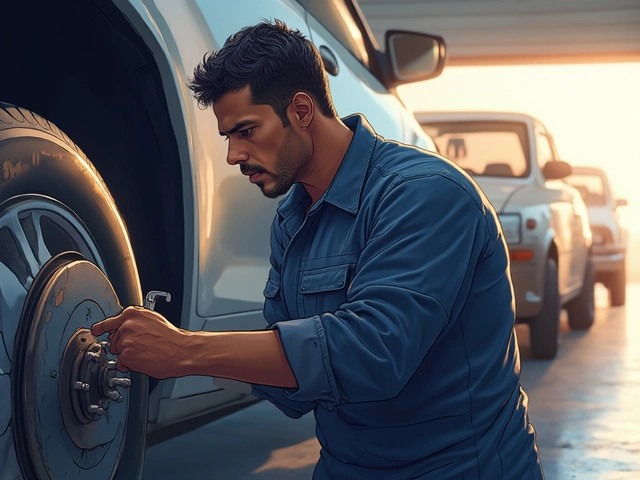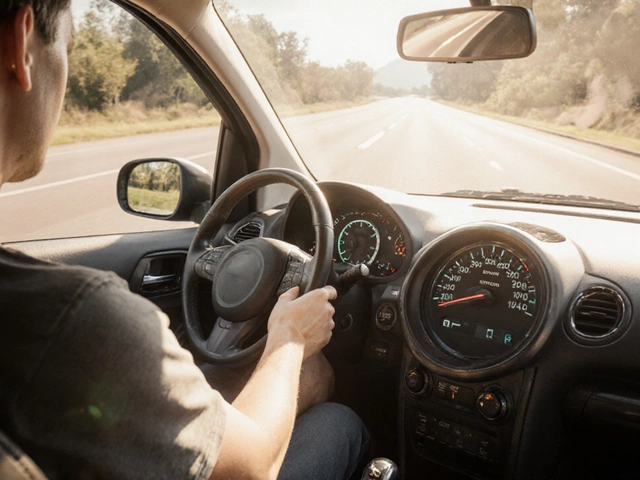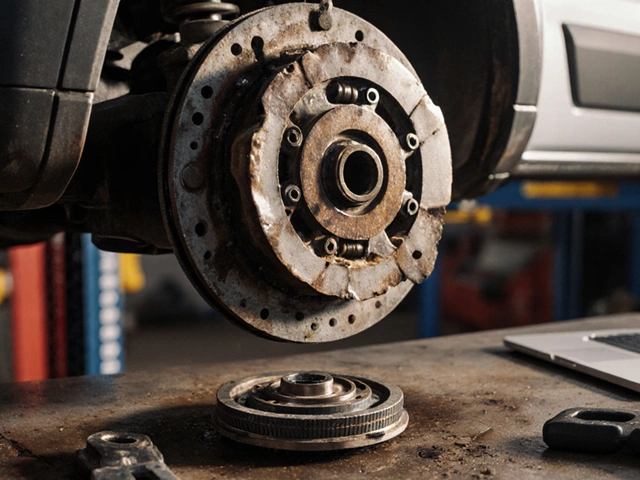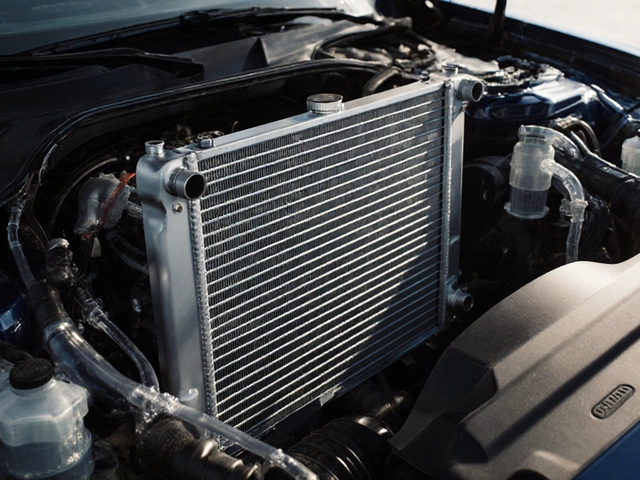
Ever noticed your car making strange noises when braking or feeling a bit off? These little signs could mean your brake pads are due for a check-up. It's crucial to stay aware of how your brakes behave because ignoring them can lead to more than just a bumpy ride—it can jeopardize your safety.
Brake pads often give us warnings before they completely wear out. You might hear a screeching sound or feel a vibration when hitting the brakes. Don't brush these signs aside! Your car may be telling you it needs some TLC to keep running safely and smoothly.
So, where do you start? First, let's focus on some basic checks. Open up your good old car manual and locate the section on brakes—it’s a treasure trove of info! Also, peeking through the wheel spokes can often give you a glimpse of the pads themselves. Are they less than a quarter inch thick? That's a surefire sign it's time for a change.
Feeling brave and handy? With just a few tools, you can get a closer look yourself. But, of course, if you're not feeling confident, that's what the pros are for. Never gamble with safety, especially when it comes to your brakes.
Signs of Worn Brake Pads
If your car has been making some funky noises or just not stopping like it used to, it's time to look at those brake pads. They're vital to your car's brake maintenance and can seriously affect car safety if left unchecked. Here’s what to watch out for.
Squeaking or Squealing Noises
One of the most common signs is a high-pitched squealing sound when applying the brakes. Most of the time, this is the built-in wear indicator—a little metal tab that creates noise once the pads reach the end of their life. Don't ignore it; that's your cue for a brake check.
Reduced Responsiveness
Ever feel like the brakes just don't grab like they used to? If you're pushing down harder and stopping feels more of an effort, your worn brakes might be the issue. Reduced responsiveness can increase the stopping distance and put you at risk.
Grinding Sound
If you've moved past the squeal and now hear grinding when you brake, you're probably down to the metal. This means the brake pads have worn completely, and now it's metal-on-metal contact. This can damage your rotors, so act fast!
Vibration Upon Braking
Feeling a pulsing or vibration in the pedal when you brake often points to warped rotors, but it can also mean unevenly worn brake pads. Either way, it's a sign that the whole braking system needs attention.
Visible Pad Wear
Take a peek between the spokes of your wheel. If you can't see at least a quarter of an inch of the pad, it’s probably time for new ones. Using a flashlight can help you see better, especially if it's dark or your wheels have fancy covers.
| Sign | Possible Cause |
|---|---|
| Squealing Noise | Wear Indicator |
| Grinding Sound | Metal-on-Metal |
| Vibration | Warped Rotors or Uneven Pads |
Respect these warning signs! Keeping tabs on your brake pads not only saves you from bigger repairs but also keeps you safe on the road.
DIY Brake Pad Inspection
Feeling adventurous? Inspecting your brake pads at home isn't as daunting as it sounds. Whether you're a seasoned DIY enthusiast or a curious beginner, a little hands-on time with your car can be empowering—and save you some cash.
Tools You'll Need
- Jack and jack stands
- Wheel chock
- Lug wrench
- Flashlight
Getting Started
First, ensure your car is parked on a flat surface, you don't want any accidental rolling. Start by wedging a wheel chock under the rear tires to keep things stable. Next, grab your jack and lift the car, secure it with jack stands for safety.
Remove the Wheel
Time to bring out the lug wrench and take off those wheel nuts. Once that's done, pop the wheel itself off. This will give you a clear view of the brake pads.
Checking The Pads
Now with your flashlight, take a close look at the brake pads. New, healthy pads are about half an inch thick. If they look worn down to a quarter inch or less, it's time to think about replacing them.
Additional Tips
- If you see dust on the pads, give them a gentle brush—keeping them clean prolongs life.
- Check for scoring or grooves on the rotor. That might mean the pads are wearing unevenly.
| Pad Thickness | Action Needed |
|---|---|
| 1/2 inch | Good |
| 1/4 inch | Replace Soon |
| 1/8 inch | Replace Immediately |
If everything looks good, carefully place the wheel back on, tighten those nuts, and lower your car. All done! But if things seem off, don’t wait—get a pro to check it out. Brakes are no place for guesswork.

Common Mistakes
We all make mistakes, especially when it comes to car maintenance. But when it comes to brake pads, some missteps can cost you big time. Let's break down a few common mistakes people make, so you can steer clear of trouble.
Ignoring Warning Sounds
The loud screech or whine isn't just there to annoy you; it's a signal from your car calling for help. Many folks think it's okay to put it off, but that sound typically means your brake pads are worn. Driving too long without addressing this can lead to expensive damage.
Doing a Visual Check Only
Yes, a visual check can tell you a lot, but it shouldn't be your only step. Just looking at the thickness might not reveal potential issues like uneven wear. Make sure to feel around for signs like vibrations or pulling to one side when braking.
Forgetting the Rest of the Brake System
Replacing your brake pads is often part of a larger system check. Don't skip looking at the rotors and calipers too. If they're in bad shape, your new brake pads won't perform well and could wear out faster.
DIY Overconfidence
While we're all for some DIY spirit, some go into repairs without the right knowledge or tools. If you're not sure, it's best to consult with a professional. A simple mistake can lead to serious safety risks on the road.
Comparison of DIY and Professional Costs
| Task | DIY Cost | Professional Cost |
|---|---|---|
| Replace Brake Pads | $50 - $100 | $150 - $300 |
| Smoothing Rotors | $30 - $50 | $100 - $150 |
Remember, achieving a safe and smooth ride involves more than just slapping on new parts. Staying informed and consulting with experts when needed keeps you and your car in top-notch condition!
When to Consult a Professional
When it comes to brake maintenance, knowing when to call in the experts can save more than just your hard-earned cash—it could prevent a risky situation on the road. Sure, there are some DIY checks you can do, but sometimes the job requires a skill set or tools that most of us just don't have.
Brakes can be tricky, so here are a few specific scenarios where it might be best to let a pro handle it:
- Persistent Noise: If those brake pads are still making a racket after you've checked them, something more complex might be going on, like rotor issues or dust build-up that requires advanced tools.
- Vibrations: Your steering wheel shouldn't feel like it's auditioning to be a massage chair when you brake. Consistent vibrations or wobbling are a classic sign of warped rotors, which is a job for the professionals.
- Warning Lights: Your dashboard isn't just for decoration. When that brake indicator lights up, it's speaking to you in code—and you're gonna need a tech-savvy translator (also known as a mechanic) to decode it.
- Thinning Brake Pads: If you've noticed your brake pads are super thin (under a quarter inch), it's generally safer to let someone who knows their stuff handle the replacement.
So, when should you bite the bullet and get professional help? Generally, whenever you're unsure if what you're hearing or feeling means a simple fix or something more serious. Better safe than sorry!
Also, it's helpful to know that studies show well-maintained brakes can improve your stopping power by up to 25%, making expert consultations not just a good idea, but an investment in your road safety.





